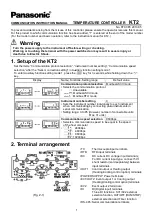
Theory of Operation
2-13
ACC Theory of Operation
The ACC consists of three PC boards (refer to Figure 2-2):
•
Main PCB
•
Transition board assembly
•
Power supply
Main PCB (78581-60200)
The Main PCB is considered the control/drive board. It connects up to 32
branch cables via the Transition Board to provide timed multiplexed
communication links and system synchronization. The circuitry on the
PCB sets up a polling cycle that allows each branch access to the SDN bus
in a sequential manner. Data coming in from one branch is received and
then “broadcast” simultaneously to the remaining branches of the SDN. As
each branch transmits in sequence, the SCC buffers, retimes, and
retransmits the data.
System communications is controlled, timed, and synchronized by the
ACC issuing regular system sync messages every 32 milliseconds and a
master sync message every second.
When power is supplied, the MODE switch is sensed for normal operation.
The ACC then issues a SYNC TAP message to all branches connected to
the ACC. The ACC senses the poll timer for 4 ms elapsed time to allow the
instruments to unload their receive buffers and load their transmit
buffers. Then, branch 0 is set up for a TALK TAP message by first sensing
the branch for activity and line state (polarity 1 or 0). If activity is sensed
within a 2.7 microsecond window, or the line is in the logic 1 state, then
the branch is considered faulty (FIRE AXE condition) and is skipped over
without a TALK TAP being issued. However, if no activity is sensed, a
TALK TAP message is transmitted out the branch in which the branch
number is embedded. The branch number is a 6-bit block encoded word
derived from the Block Code ROM. The 5-bit branch binary counter is the
ROM address pointer.
After the TALK TAP message has been transmitted, the ACC turns around
the line drivers and receivers and senses for activity from branch 0 and,
also, turns on the “broadcast” to all remaining branches. The ACC senses
for transmission activity for 12.2 microseconds and will timeout and
switch to the next branch if no activity is sensed. Activity is defined as one
or more positive transitions trapped within the 12.2 microsecond window.
The ACC senses the end-of-transmission by detecting 12.2 microseconds of
continuous silence; no positive transitions for example. The next branch in
sequence is then sensed for silence (no activity) and issued a TALK TAP
message in the same manner. Each branch is polled sequentially until all
32 branches have been issued a TALK TAP message. The last branch
Содержание 78581B
Страница 46: ...ACC Maintenance 4 2 ...
Страница 54: ...Installation Responsibilities Customer and Agilent Technologies 6 4 ...
Страница 90: ...Procedures 8 28 ...
Страница 98: ...Contacts 10 6 ...
















































